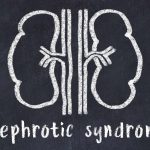
Aplastic Anaemia in Children- Symptoms, Diagnosis, and Treatment by Dr. Stalin Ramprakash
10 min readWritten by Suma R P


Aplastic anaemia in children is a serious condition that can interfere with their growing years and an inability to live a normal life. This condition can happen due to innate or acquired reasons. The symptoms associated with this type of anaemia can be debilitating for the child and the treatment options can be tiring too.
Fortunately, there is hope for parents of children suffering from this disease. A heamatologist is the specialist to approach when your child has this condition. We explain in-depth aplastic anaemia in children, its manifestations, treatment options and when you should approach a doctor.
In This Article
- What is Aplastic Anaemia in Children?
- How Does Aplastic Anaemia Occur?
- Causes of Aplastic Anemia in Children
- Symptoms of Aplastic Anemia in Children
- How is Aplastic Anaemia Diagnosed in Kids?
- Treatment For Aplastic Anaemia
- Complications Associated With Aplastic Anaemia
- What is Severe Aplastic Anaemia?
- How Can You Help Your Child Deal With Aplastic Anaemia?
- FAQ’s
What is Aplastic Anaemia in Children?
A human body regularly needs fresh new cells to carry on with all its normal functions. These fresh and new blood cells are continuously made by a special set of cells. These stem cells reside in a tissue called bone marrow. When the bone marrow fails to generate new blood cells often due to deficiency of stem cell number or function in the bone marrow, and the decreased number of blood cells is severe enough to affect the health of the patient. This condition is known as aplastic anaemia.
Aplastic refers to the failure of a tissue or an organ to work normally. There are various causes behind the failure of the bone marrow in producing new blood cells.
How Does Aplastic Anaemia Occur?

There are three types of blood cells in the human body, Red Blood Cells (RBCs) or erythrocytes, White Blood Cells (WBCs) or leukocytes, Platelets, or thrombocytes.
All these three types of blood cells have three different functions.
- Red Blood Cells carry oxygen to the body from the lungs.
- White Blood Cells are the scavengers of the body that fight infections and are the main components of the immune system.
- Blood Platelets help in building connective tissue at any place of injury to avoid bleeding and help in healing.
When the bone marrow fails to produce these blood cells-
- The body cannot receive enough oxygen because of the reduction in RBCs.
- Infections may increase because of the presence of a low number of WBCs.
- Repeated bruising and bleeding occur because of the decreased production of platelets.
Causes of Aplastic Anemia in Children
Aplastic anaemia in children remains connected to many causes, or sometimes it arises spontaneously without any known reason.
There are two types of aplastic anaemia.
- Acquired Aplastic Anaemia: Due to external factors.
- Inherited Aplastic Anaemia: The tendency to develop aplastic anaemia is passes from the parent. Inherited aplastic anaemia is very rare.
The possible causes for aplastic anaemia in children include
1. Autoimmune Disorders
Autoimmune disorders are the kind of diseases where the immune system attacks our own body leading to conditions like rheumatoid arthritis and lupus. These autoimmune disorders can eventually result in aplastic anaemia. Most of the unexplained acquired aplastic anaemia is now thought to be due to autoimmunity that targets the bone marrow stem cells making this the most common cause of aplastic anaemia.
2. Radiation or Chemotherapy
Children who are undergoing extensive chemotherapy and radiation for existing cancers are at the risk of getting aplastic anaemia. Radiation and chemotherapy can sometimes affect the functioning of the bone marrow.
3. Exposure to Toxins
Exposure to some toxins leads to the destruction of red blood cells resulting in aplastic anaemia. Toxins like pesticides, insecticides, and metals like arsenic. Exposure to benzene also causes aplastic anemia.
4. Viral Diseases
Some viral diseases like hepatitis, Epstein-Barr virus (EBV), Cytomegalovirus (CMV), Human Immuno Virus (HIV) can also affect the bone marrow and lead to aplastic anaemia.
5. Drugs
Certain drugs like antibiotics can cause aplastic anaemia. (drug-induced aplastic anaemia)
6. Cancers
Some types of cancers can lead to bone marrow damage thus causing aplastic anaemia.
Symptoms of Aplastic Anemia in Children

Aplastic anaemia is a condition where the production of new blood cells either reduces or fails completely. The symptoms of this condition in children include
- Breathlessness or shortness of breath because of the inadequate supply of oxygen to the body. This happens if there are no adequate red blood cells.
- Repeated infections, the cause of repeated infections is because of decreased white blood cells.
- Bruising and unstoppable bleeding even for a small cut. This happens due to the inability of blood to clot at the injury site due to fewer platelets.
Other symptoms include
- Pale skin
- Increased heart rate
- Tiredness or fatigue
- Recurring infections or infections not going away
- Fatigue and dizziness
- Nose bleeds
- Fever and mouth ulcers
[Read : Breathing Problems In Children – Causes And Symptoms]
How is Aplastic Anaemia Diagnosed in Kids?

Symptoms in children suffering from aplastic are notable and visble. If your child complains of fatigue all the time, falls ill often with infections and looks pale, you may need to consult a doctor, preferably haematologist. A haematologist prescribes the following tests to diagnose the disease.
1. Blood Tests
Doctors will prescribe a Complete Blood Count or Complete Blood Picture (CBP) to check the number of blood cells that are present in the body. Blood tests are useful to determine if there is an autoimmune disorder.
Complete Blood Picture is also useful to determine the percentage of haemoglobin and hematocrit. Haemoglobin is a protein that transports oxygen in the blood. Technicians or will microscopically observe the cells to see if there is any abnormality in their size and shape.
2. Bone Marrow Aspiration and Biopsy
In the advanced stages of aplastic anaemia, a bone marrow biopsy will be done. In this process, doctors will insert a needle into the hip bone to collect the fluid sample from the bone marrow and a small piece of bone marrow. Pathologists will examine the fluid sample through the procedure to check for any abnormal cells. The sample also provides information about the matured and number of healthy cells the bone marrow can produce.
For painless biopsy procedures, children might need anaesthesia so that they do not endure any pain during the process. Doctors can also ask for the family history and the symptoms that the child is experiencing.
Treatment For Aplastic Anaemia
Treatments for aplastic anaemia always depend on the severity of the disease. If the child has mild aplastic anaemia, they might not need any treatment, but need to follow up closely to ensure aplastic anaemia recovers and does not progress to severe aplastic anaemia. Any suspected offending agent must be removed if possible. But, in severe cases treatment needs to be initiated urgently.
Urgency and type of treatment is based on some of the following factors
- Your child’s age and the severity of the disease.
- Symptoms that your child is experiencing.
- Doctors decide the child’s treatment based on their health history and their previous medical conditions.
- The ability of the child’s physical and mental condition to accept the treatment can also be considered.
The treatment can be divided into supportive care and definitive treatment.
1. Supportive Care

The supportive care for aplastic anaemia will include the following methods of treatment.
a) Blood and Platelet transfusions
Aplastic anaemia, in severe cases, needs blood transfusions and may need a platelet transfusion. Ideally, the definitive treatment needs to start as soon as the severe aplastic anaemia diagnosis is established.
b) Antibiotics
Antibiotics are given to reduce infections. Infections recur due to the decreased number of white blood cells.
2. Definitive Treatment

The definitive treatment for aplastic anaemia will include the following treatment methods.
a) Immunosuppressive Therapy
This therapy is given if aplastic anaemia is diagnosed, and inherited bone marrow failure syndromes were ruled out by appropriate investigations. Immunosuppressive therapy stops the human immune system from reacting abnormally on its own bone marrow stem cells and thereby allowing recovery of the blood cells. This treatment may be very prolonged and there is a possibility of losing the response to treatment after some time in which case stem cell transplant may become necessary.
b) Medications For Bone Marrow Stimulation
Some hormonal medications and some newer small molecule medications are given to stimulate the stem cells of the bone marrow. Stimulating the bone marrow helps increase the production of healthy blood cells. This is often used along with immunosuppressive medication.
c) Bone Marrow Transplant or Stem Cell Transplant
This is the main treatment option for those with inherited bone marrow failure syndromes and those with severe acquired aplastic anaemia as a permanent curative option. If a healthy fully matched donor is available, stem cell transplant is a preferred treatment option. The results of half-matched related donors ( eg. parents) and unrelated transplant results have improved significantly recently. This is the most preferred treatment option for severe cases and works successfully in younger people and children. A bone marrow transplant or a stem cell transplant can be a permanent solution for aplastic anaemia.
[Read : Bone Marrow Transplant For Children]
3. Prolonged Checkups
After the treatments, the child might require regular physical examinations and blood tests to make sure they are doing fine.
Complications Associated With Aplastic Anaemia

Aplastic anaemia reduces the overall immunity in children. As a result, there are some complications the the disease causes.
Here is a list of complications that aplastic anaemia causes in children.
- Children with aplastic anaemia will be at high risk of acquiring different kinds of serious infections because of the reduced number of white blood cells.
- Increased bleeding.
- Treatments can also lead to secondary infections and an increased risk of cancers like leukaemia.
- Side effects due to blood and platelet transfusions.
- Growth disorders, and lower energy due to constant medication and hospitalizations.
What is Severe Aplastic Anaemia?
Severe aplastic anaemia is a condition in which the bone marrow is unable to generate any more new blood cells and the blood cell numbers are critically low and are life-threatening. Since these blood cells are very important to carry on with the regular and vital functions of the body, their absence can lead to serious health complications.
If treatment is not initiated on an urgent basis, severe aplastic anaemia is likely to result in death over a short period of time due to complications such as infection or bleeding.
Severe aplastic anemia might need blood and platelet transfusions and a bone marrow transplant (BMT). The fresh and new bone marrow will be able to produce new blood cells thus increasing blood cell production and helping in eradicating the disease. In most cases of severe aplastic anaemia in young adults, bone marrow transplant works as a successful treatment.
How Can You Help Your Child Deal With Aplastic Anaemia?

Children should be followed up regularly preferably by a pediatric hematologist and treatment should be started as soon as possible after appropriate investigations. Children suffering from aplastic anaemia and their parents must be provided with proper psychological support from their health care provider.
What Parents Should Keep in Mind About Aplastic Anaemia?
When you have a child with aplastic anaemia, here are a few pointers on how you can deal with it and help your child deal with it as well.
- Understand every step of the treatment and comply.
- Help their child understand their condition.
- Keep up with regular visits to the hospital and frequent physical and blood examinations.
- Prompt consumption of the prescribed medication with the help of the parents can make the child stay away from any other complications.
- If your child develops a fever or any bleeding symptoms visit the hospital emergency department without any delay.
- Proper isolation and protection from toxin exposure are very important.
- Do not let your child stay in crowded places for a very long time and avoid contact with people with infective symptoms.
- Intense hand washing and keeping the environment chemical-free.
- Children suffering from aplastic anemia might require long treatments and a longer stay in hospitals if their condition demands a blood transfusion.
- Regular follow-ups after the bone marrow transplant and blood transfusions are very important to avoid the risk of relapses.
- Children who need immunosuppressive therapy must be kept under proper monitoring as they are at an increased risk of catching infections.
Aplastic anaemia is a condition in which the stem cells of the bone marrow fail to generate new blood cells. This condition can be life-threatening and can be very serious if ignored. Children with aplastic anaemia need proper monitoring at home and in the hospital. This condition is treatable, and the child will be able to outgrow the disease with the right treatment options. Frequent health checkups and follow-ups with the paediatrician can help the child with aplastic anaemia avoid unnecessary complications. Following all the necessary precautions and helping the child physically and psychologically plays a key role in their recovery.
FAQ’s
1. What is Aplastic Anaemia in Children?
Aplastic anaemia is a condition in which the bone marrow fails to generate new blood cells eventually leading to the loss of immunity, increased tendency for bleeding and may need frequent blood transfusions. Aplastic anaemia can also cause serious health complications if ignored. Proper monitoring and the doctor’s assistance can help the child recover from the disease.
2. Is Aplastic Anemia Treatable?
Yes, aplastic anaemia has many treatment options based on the severity of the disease. Doctors analyze and administer treatments based on the child’s health condition and their medical history.
3. What Are the Early Symptoms of Aplastic Anemia in Children?
The early symptoms of aplastic anaemia in children include
- Feeling tired and fatigued
- Nose bleeds
- Frequent or recurring infections
- Pale skin
- Easy bruising and bleeding that does not stop
- Shortness of breath
4. Who is at Risk of Aplastic Anaemia?
Any child can get affected by aplastic anaemia. People of any age group can get aplastic anaemia. It is most common in the age group of 10-20 years and children with hereditary conditions. Children undergoing extensive chemotherapy and radiation are at the risk of getting aplastic anaemia.
Read Also: Stem Cells Uses, Importance, and Potential Medical Applications by Dr. Stalin Ramprakash

Suma R P,M.Sc (Organic Chemistry) Rayalaseema University B.Sc (Biotechnology) Sri Krishna Devaraya University.
Suma is a passionate content writer with a strong keenness to understand the miracle of pregnancy, birth, and parenting. Suma has successfully transitioned into a full-time content writer and a key contributor at Being The Parent. She leverages on her experimental background in chemistry and experience in writing to come up with well-researched content that helps parents struggling to deal with various medical conditions of their children.Read more.
Responses (0)
Want curated content sharply tailored for your exact stage of parenting?
Sponsored content
Discover great local businesses around you for your kids.
Get regular updates, great recommendations and other right stuff at the right time.











